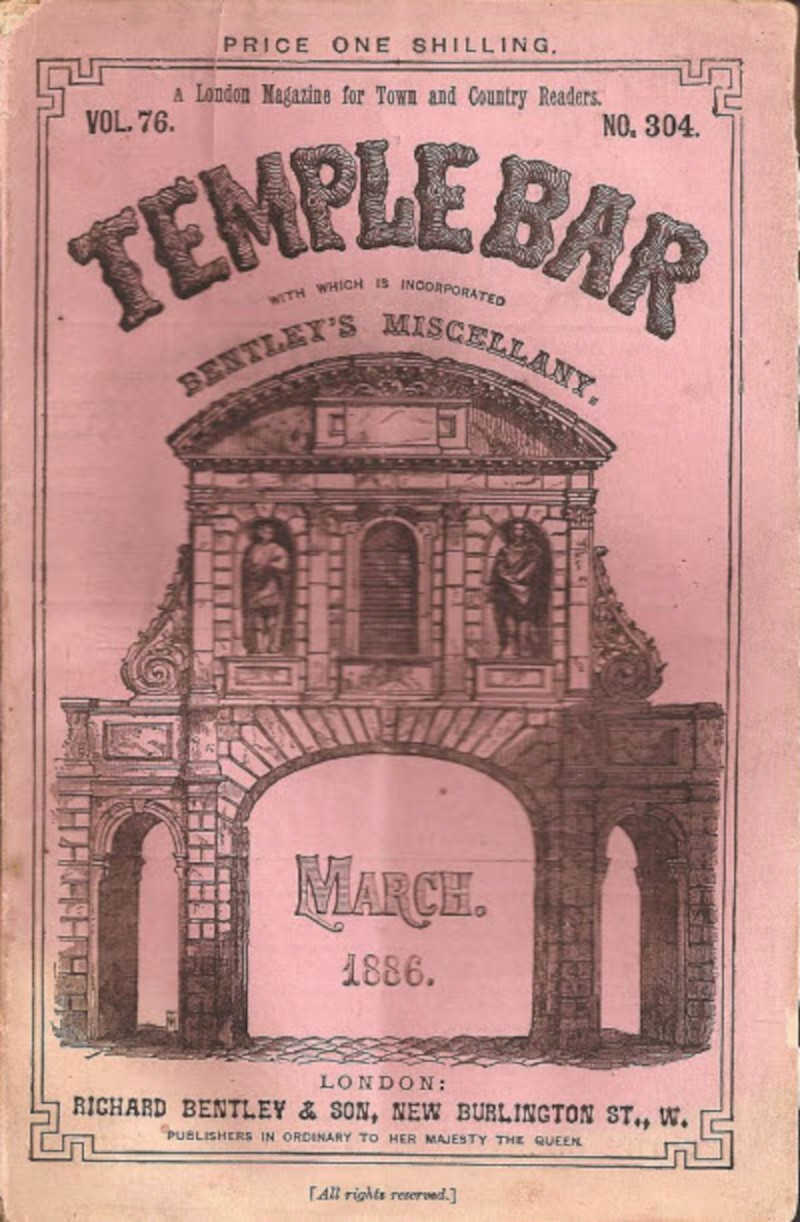Temple Bar (Magazine)

Distributed as a “a London magazine for town and country readers”, Temple Bar was a literary periodical available during the late 19th and early 20th centuries. It was founded in 1860, by George Augustus Salsa, who aimed to compete with The Cornhill Magazine, which had printed its first issue at the beginning of the year and was already enjoying phenomenal success. Early issues of Temple Bar were marketed with the promise they would be “full of solid yet entertaining matter, that shall be interesting to Englishmen and Englishwomen”. [1]
Temple Bar was intitially edited by Salsa, an author and journalist who regularly contributed articles to The Illustrated London News and The Daily Telegraph. Some of the later issues were edited by the author M. E. Braddon.
In 1896, Temple Bar magazine merged with Bentley’s Miscellany, and continued to publish until 1906. Swallows and Amazons author, Arthur Ransome, was the last editor of the magazine, taking over the helm at a time when Temple Bar circulation had dropped to to around 8,000; a far cry from the circulation of 13,000 it reached during the 1860s.
Although it wasn’t a genre magazine, like a lot of publications of its time, Temple Bar often published ghost and horror stories, many of which are now considered classics. Examples include Squire Toby’s Will by J. S. Le Fanu (published January 1868) and The Captain of the Polestar by Sir Arthur Conan Doyle (Published January 1883).
1. The paradox of a periodical: Temple Bar under the editorship of George Augustus Sala (1860-1863)
~~~
